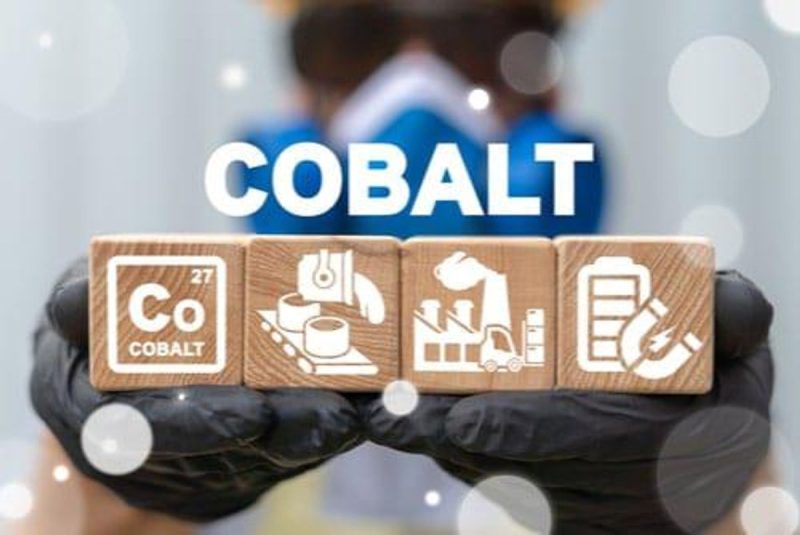Interest in cobalt has increased in recent years due to its use in the lithium-ion batteries used to power electric cars.
Global cobalt mine production reached a record high of 230,000 metric tons (MT) in 2023, according to the US Geological Survey (USGS), with the help of increased output from the Democratic Republic of Congo (DRC) and Indonesia.
The DRC is the world’s largest producer of cobalt by far, with its output reaching 170,000 MT last year — almost 74 percent of global supply. For comparison, the second largest cobalt producer Indonesia put out 17,000 MT of the battery metal.
Not surprisingly, the DRC is home to the world’s five largest cobalt mines, according to the most recent data provided by S&P Global Market Intelligence. For investors who want to learn more about the sector, here’s an overview of those mines.
1. Tenke Fungurume
Total 2023 production: 28,500 MT (reflects estimated production values)
Tenke Fungurume, located in the DRC’s Lualaba province, is 80 percent owned by China’s CMOC Group (OTC Pink:CMCLF,SHA:603993) and 20 percent owned by DRC state mining company Gécamines after Freeport McMoRan (NYSE:FCX) sold Tenke to CMOC in 2016. Tenke Fungurume was the subject of a royalties dispute between the two JV partners, which resulted in COMC making a US$2 billion settlement payment to Gécamines in July 2023.
In addition to its cobalt output, the mine is the DRC’s largest copper producer.
Cobalt production out of Tenke in 2023 increased by nearly 85 percent from 2020 levels. This impressive growth, alongside operations at its new Kisanfu mine, discussed below, were in large part responsible for CMOC overtaking Glencore (LSE:GLEN,OTC Pink:GLCNF) as the worlds’ largest cobalt producing company in January.
China is not only the world’s leading consumer of cobalt, but also the world’s largest producer of refined cobalt. The majority of its feedstock is imported from the DRC. According to the USGS, China’s lithium-ion battery industry is responsible for nearly 87 percent of the nation’s cobalt consumption.
2. Kamoto
Total 2023 production: 27,600 MT
The Kamoto copper-cobalt mine, which is located in the DRC province of Katanga, is operated by Kamoto Copper Company, jointly owned by Glencore (75 percent) and Gécamines (25 percent). Kamoto’s cobalt production has risen by more than 15 percent over the past three years.
In addition to the Kamoto underground mine, the Kamoto Copper Company also owns the KOV and Mashamba East open-pit mines as well as the Luilu refinery in Kolwezi.
3. Kisanfu
Total 2023 production: 27,000 MT (reflects estimated production values)
Also in the province of Lualaba, the massive new Kisanfu mine is 95 percent owned by Kisanfu Mining — a subsidiary controlled by CMOC (75 percent) and Chinese battery giant CATL (SZSE:300750) (25 percent). The DRC government holds the remaining 5 percent.
CMOC purchased the Kisanfu deposit from Freeport McMoRan in 2020. The start-up of the Kisanfu mine in Q2 2023 is cited by Reuters as one of the major contributing factors to the record surplus of cobalt experienced by the global market last year.
4. Metalkol RTR
Total 2023 production: 14,700 MT (reflects estimated production values)
The Metalkol RTR hydrometallurgical cobalt and copper facility, located in the DRC’s Haut-Katanga province, is operated by Eurasian Resources Group (ERG) Africa. Producing 14,700 MT of cobalt in 2023, the mine’s output levels are up 40 percent from 2020 levels.
Metalkol RTR reprocesses historical cobalt-copper tailings that were accumulated over decades of mining by previous operators, including the existing Kingamyambo tailings deposit and those in the Musonoi River. ERG has committed to the Responsible Minerals Assurance Process, part of the Responsible Minerals Initiative. The company’s goal is to reduce local pollution by relocating legacy tailings to a responsibly managed facility, and it is also working to end child labor in the DRC’s mining industry.
It’s these commitments that in April 2024 attracted a supply deal with Electra Battery Materials (NASDAQ:ELBM,TSXV:ELBM) in which Metalkol will provide long-term supply of cobalt hydroxide to Electra’s under-construction refinery project in Ontario, Canada — slated to to be North America’s first battery grade cobalt sulfate refinery. In 2024, Canada dethroned China for the top spot in BloombergNEF’s global lithium-ion battery supply chain ranking.
5. Mutanda
Total 2023 production: 11,200 MT
The Mutanda copper-cobalt mine in Lualaba Province is operated by Mutanda Mining, a wholly owned subsidiary of Glencore, which holds a 95 percent interest in the mine. The DRC government holds the remaining 5 percent stake.
Three open pit mines comprise Mutanda’s operations, which together have a mine life of 25 years according to the company’s website. The low-price environment for cobalt led to Mutanda being placed on care and maintenance in 2019. Glencore began a phased reopening of operations in October 2021, starting with the processing of ore from existing stockpiles.
The company’s website states its intention for Mutanda to “resum(e) full mining activity by 2024;” however, Reuters reported in late November 2023 that depleting oxide ore grades at surface may translate to a 15 percent less per year production of cobalt unless Glencore makes a decision to invest in mining the sulfide ores below surface. The company is reportedly conducting a feasibility study to better inform that decision.
Securities Disclosure: I, Melissa Pistilli, hold no direct investment interest in any company mentioned in this article.

